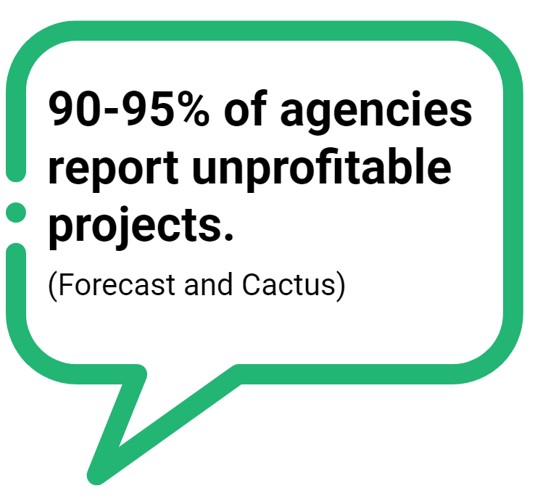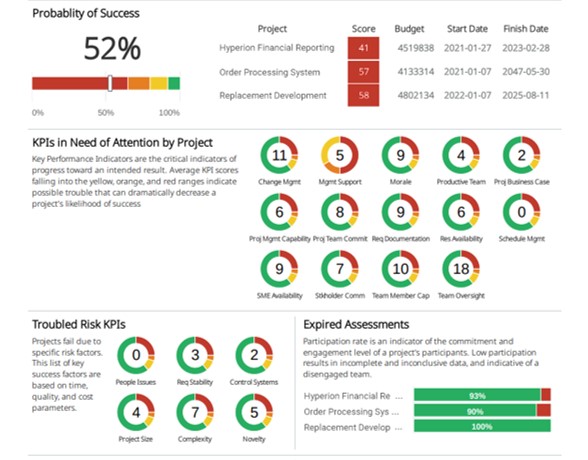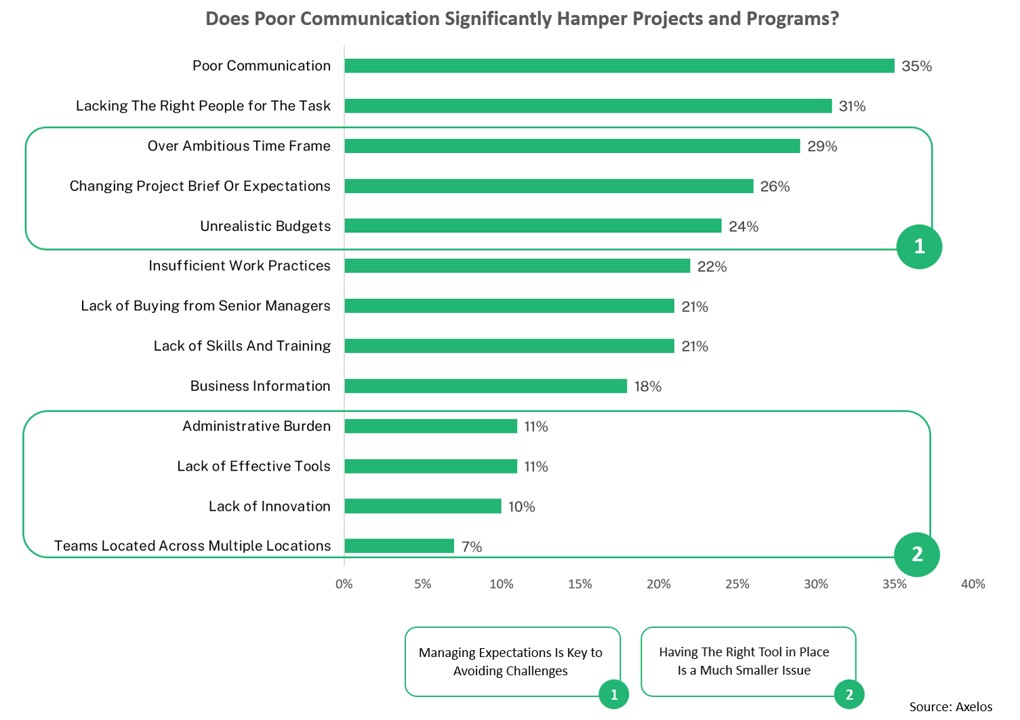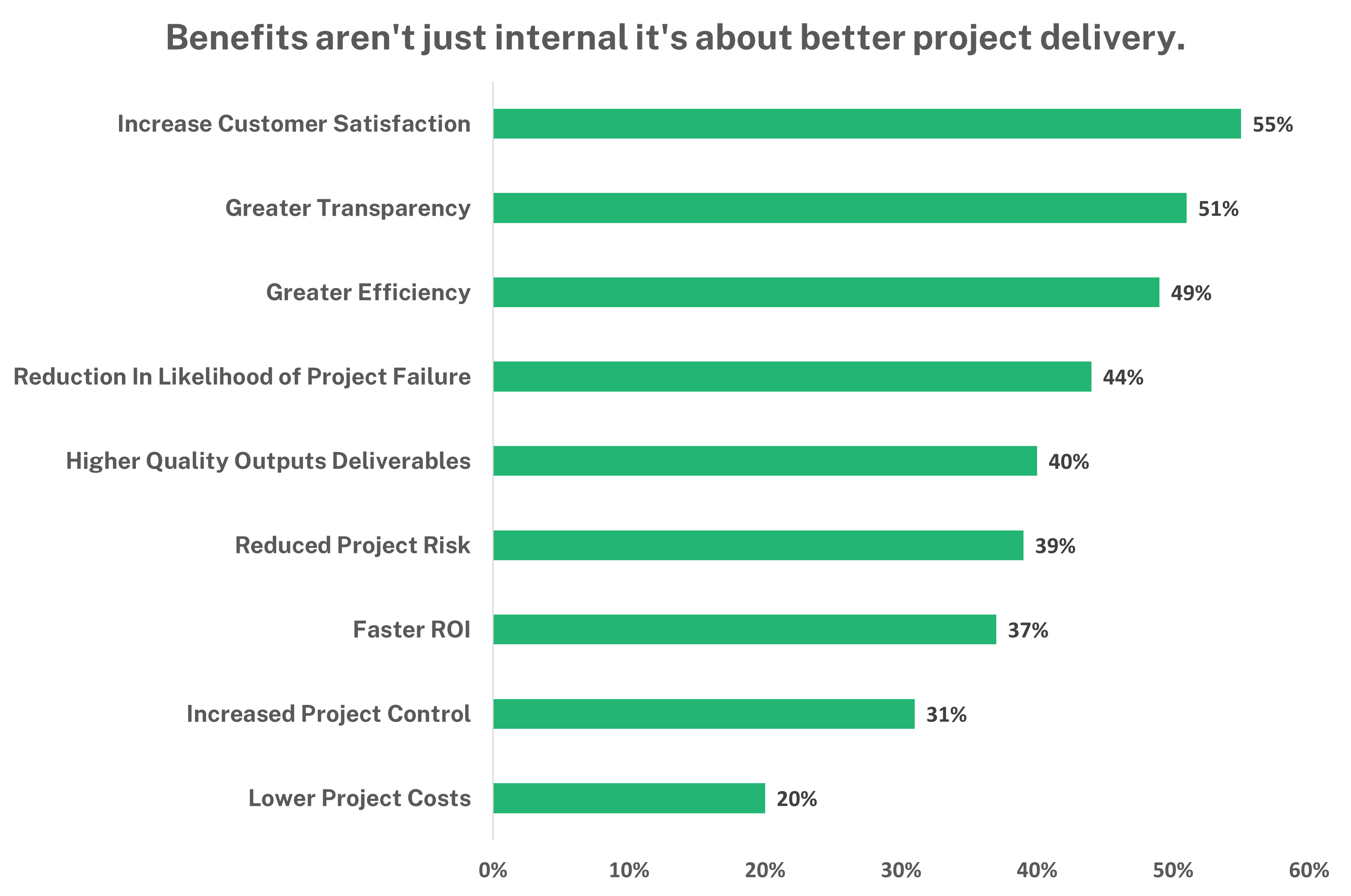
Did you know that a staggering 9 out of 10 leaders admit their projects fall short of achieving maximum project profitability? It’s a sobering reality—one that echoes across boardrooms and project teams alike. Perhaps you’ve experienced it firsthand: the relentless pursuit of cost-cutting, the strain of overburdened resources, and the constant juggling act to keep revenue flowing. But there’s the game-changer that can help you deliver every project successfully, with robust profit margins—where quality thrives, and burnout becomes a distant memory. It sounds too good to be true, right? Wrong!
Progressive AI-led business solutions carve the path to enhanced project profitability with strategic maneuvers in managing your projects. By leveraging data-driven insights and analytics, you can elevate your chances of optimizing margins on every project. The journey isn’t effortless, but the rewards are substantial. This article delves into project profitability - its importance, calculation methods, actionable steps to improve it, and modern business solutions that boost project profits.
Project Profitability: Beyond the Bottom Line 
Is project profitability a given? Not according to a recent report by Forecast and Cactus, which surveyed 160 professionals and discovered that 90–95% of agencies don't consider their projects profitable. While it's tempting to equate revenue with success, true financial health lies deeper. Project profitability lifts the veil, revealing the cold, hard cash remaining after expenses drain your project's resources and time. It's a crucial metric, not just for measuring success but for fueling sustainable growth.
Think of it as your business's fuel gauge. High project profitability translates to full gauge, enabling you to power future endeavors and navigate market fluctuations. But a low gauge warns of potential financial strain, urging strategic adjustments.
Beyond dollars and cents, project profitability empowers smarter decision-making. It helps you identify your most valuable clients, guiding your focus and resources toward partnerships that truly enrich your bottom line.
Certainly, project profitability is more than just a figure; it’s a guiding metric for your company’s direction. It reflects a project’s financial success or failure, considering all expenses and resources involved. A project’s high earnings don’t always equate to high profitability. Therefore, grasping the concept of project profitability is crucial for informed decision-making, project prioritization, and pinpointing the most financially rewarding clients using dependable data.
Remember: A high-revenue project doesn't guarantee high project profitability. Dive deeper, measure wisely, and unlock the true potential of your ventures.

What Is the Project Profitability Index?
The Project Profitability Index (PI) stands as a cornerstone metric in assessing the potential success of an investment or project. This crucial financial indicator offers invaluable insights into whether a proposed project is likely to yield positive returns, empowering organizations to make strategic decisions with confidence.
Understanding the PI Function
The PI essentially compares the present value of anticipated future cash flows generated by a project to the initial investment required. Translating future earnings into your current worth provides a clear picture of potential project profitability.
Interpretation:
PI > 1 - signals a favorable outlook, indicating the project is expected to generate returns exceeding the initial investment.
PI = 1 - suggests a break-even scenario where returns simply cover the investment.
PI < 1 - raises caution, implying potential losses as returns may not sufficiently compensate for the initial outlay.
Significance of Tracking PI for Project Profitability
- Financial Health - Tracking PI fosters transparency into a project's financial contribution, offering a direct gauge of its impact on the organization's overall financial health.
- Resource Allocation - By illuminating projects delivering optimal returns, PI empowers informed resource allocation, ensuring valuable assets are channeled toward the most profitable projects or initiatives.
- Decision-Making - This metric serves as a crucial guidepost for critical project-related decisions. Whether to proceed, modify, or even terminate a project becomes far more transparent with the insights gleaned from the PI.
- Risk Management - Proactive issue identification is vital for project profitability, serving as an early warning system to detect deviations, intervene to mitigate risks, and protect financial goals. Advanced analytics predict challenges in advance, reducing rework, enhancing productivity, and steering projects toward successful outcomes.
- Strategic Alignment - Project goals and initiatives can be strategically aligned with organizational objectives and growth plans through clear visibility into the financial viability offered by the PI.
Modern tech solutions enhance project execution by integrating the Project Profitability Index and AI-driven insights to accelerate project success.
This graphic illustrates the transformative power of AI-driven insights on project health tracking and progress upscaling.

The following graphic is derived from data found in the Axelos Benchmarking PPM Survey 2019 report. It illustrates the perspectives of managers on the factors they believe are hindering the progress of projects and programs.

The Project Manager's Role in Maximizing Project Profitability
Project managers play a pivotal role in ensuring project profitability by:
- Resource Management - Allocating resources and equipment efficiently minimizes waste and maximizes return on investment.
- Budget Control - Tracking project expenses and proactively managing costs are crucial for staying within budget and achieving project profitability goals.
- Risk Mitigation - Identifying and developing strategies to mitigate potential risks that could impact project finances is essential for safeguarding project profitability.
- Time Management – Adhering to efficient project timelines to prevent costly delays and ensure optimal resource utilization.
- Scope Control - Keeping the project within scope avoids unnecessary work that could inflate costs and jeopardize profitability.
- Communication - Effective communication ensures stakeholder alignment with project objectives, minimizing potential financial setbacks.
- Performance Tracking - Monitoring key performance indicators allows early identification of deviations from the plan, enabling timely adjustments to course-correct and enhance project profitability.
- Continuous Improvement - Learning from past successes and failures allows project managers to refine their strategies and processes, paving the way for even greater profitability in future projects.
Gain a 360-degree project view with integrated data. Empower informed decisions and collaboration through real-time insights. A unified perspective sets new systems apart.
This dashboard demonstrates how AI-powered insights enabled by advanced analytical solutions can optimize project performance and boost profitability.

Harnessing the power of AI and analytics, project managers now infuse traditional practices with innovation, predicting and navigating the path to profitability with unprecedented accuracy. This evolution marks a paradigm shift, empowering them to drive projects forward with data-driven decisions and proactive strategies that significantly enhance efficiency and financial outcomes.
The following graphic is derived from data found in the Axelos Benchmarking PPM Survey 2019 report. It illustrates the perspectives of managers on the factors they believe are hindering the progress of projects and programs.

Source: Axelos
11 Strategic Levers to Propel Project Profitability
Project profitability is more than just a financial measure; it’s the bedrock of an organization’s sustainability and expansion. Attaining this desirable condition requires a thorough, data-centric strategy that fine-tunes every aspect of your operations with the utmost accuracy. Here are 11 crucial strategies to help you uncover hidden profit opportunities and consistently deliver significant outcomes:
Embracing the Data-Driven Imperative
- Data-Driven Decisions - Embrace robust data practices that fuel informed decision-making and process optimization with advanced AI solutions. Foster a culture of data-centricity for clear visibility into achieving your company's objectives.
- Tracking Key Performance Indicators (KPIs) - Monitor metrics like billable utilization to ensure resources maximize your earning potential by leveraging robust predictive intelligence solutions. Track profit margins to identify lucrative project types and revenue per employee to gauge resource productivity.
- Unearthing Strategic Insights - Go beyond data collection and unearth meaningful patterns and trends by using modern analytical solutions. These insights are the strategic gold dust that informs better decisions on resourcing, pricing, budgets, and more.
The following graphic is based on data gathered from various reliable sources, as presented in the PM Column.

Sharpening Your Pricing Strategy
- Fixed-Fee Project Mastery - Conduct meticulous profit and loss analyses to understand true project costs. Then, optimize workloads, deadlines, and processes to maximize earnings within established pricing constraints.
- Building for Success - Factor in an adequate profit margin from the outset. Don't underestimate its power; it's your buffer against unforeseen circumstances and the foundation for sustainable growth.
Delivering Trustworthy Estimates
- Forecasting for Competitive Advantage - Leverage powerful forecasting solutions, analytics, and historical data to provide clients with realistic and trustworthy estimates.
- Comprehensive Costing - Ensure all costs are meticulously factored in, including direct labor, materials, and indirect expenses like overhead and insurance.
The following graphic is based on data gathered from various reliable sources, as presented in the PM Column.

Embracing Dynamic Agility
- Proactive Reforecasting - As tasks, timelines, and assumptions evolve, re-evaluate budgets routinely.
- Strategic Adjustments - If needed, re-strategize resourcing or timelines to ensure a profitable outcome.
Harnessing the Power of Technology
- Leveraging the Data - Invest in robust AI-powered solutions to manage projects to streamline the tracking of budgets, time, and resources.
- Automating Mundanity - Leverage modern business solutions to automate and revolutionize your project execution.
The following graphic is based on data gathered from various reliable sources, as presented in the PM Column.

By implementing these 11 key tactics, you can transform your project execution approach from reactive to proactive, unlocking hidden profit potential and propelling your organization toward sustainable growth and success.
Conclusion
The path to robust project profitability is attainable through strategic maneuvers and modern predictive intelligence solutions. Disappointing profitability statistics underscore an urgent need for change - a future where projects consistently deliver strong profits is within reach. Advanced solutions break the chains of underbidding and resource constraints, fostering resilience for sustainable growth.
Embracing forward-thinking, risk-predicting solutions like TrueProject paves the way. Harnessing AI, analytics and real-time data, TrueProject empowers organizations with actionable insights to optimize budgets, resources and timelines. Its predictive capabilities enable early risk identification and timely interventions.
TrueProject transcends execution with comprehensive visibility into granular details, fostering informed decision-making, strategic planning and proactive adjustments. It cultivates a data-driven proactive culture, steering away from risks while maximizing returns. For budget-conscious organizations seeking maximized margins, TrueProject propels sustainable growth and customer success.
More information on TrueProject at trueprojectinsight.com

About the Author:
Serving as the CEO at TrueProject, Tom Villani plays a major role in shaping the company's strategic direction, driving growth, and fostering a culture of innovation. Prior to his role at TrueProject, Tom worked as the Senior Vice President, Digital Innovation of CAI, Vice President of Global Alliances and Partners at Hitachi Vantara, and key senior executive roles with Information Builders, MicroStrategy and AT&T. Tom also serves in advisory board capacities in the areas of Big Data and IoT.
Endnotes
- David Miller. “10 Smart Ways to Improve Project Profitability.” ProProfsProject: Nov 11, 2022. https://www.proprofsproject.com/blog/project-profitability/
- Timeular Content Team. “How to Measure Project Profitability: Free Guide with Example.” Timeular: Aug 25, 2023. https://timeular.com/blog/project-profitability/
- Shelbie Watts. “How to Measure and Grow Project Profitability.” Harvest: July 14, 2023. https://www.getharvest.com/blog/project-profitability
- Axelos Publication Team. “The PPM Benchmarking Report 2019.” StudyLib: 2019 https://studylib.net/doc/25314443/axelos-ppm-benchmarking-report-2019





